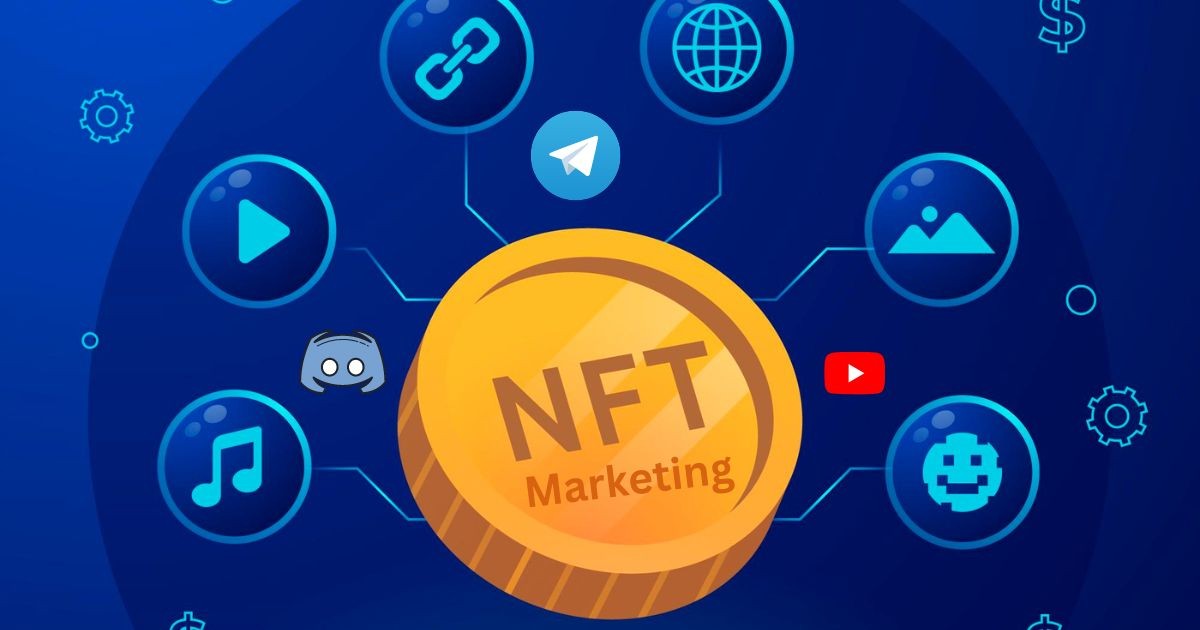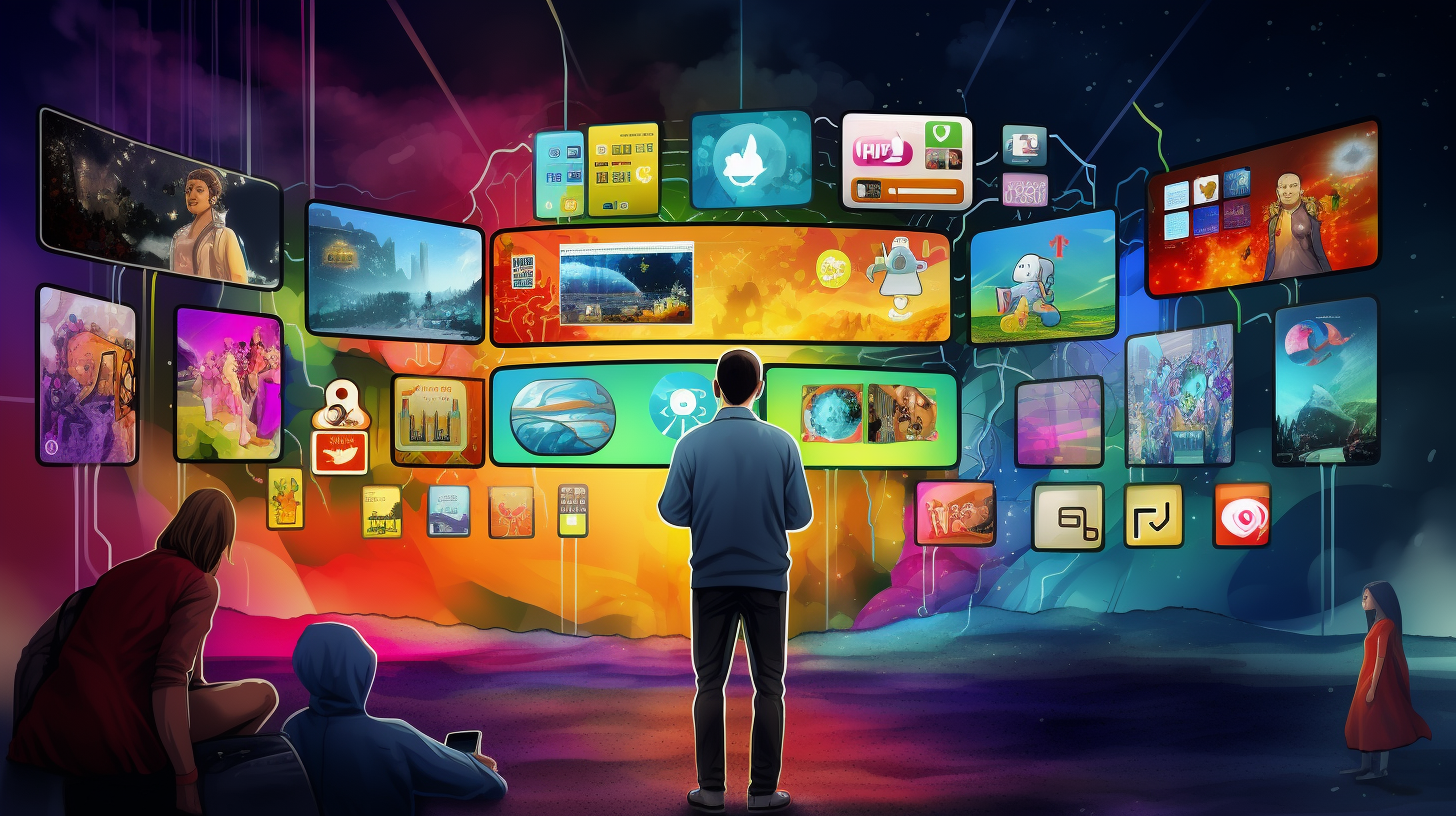What are social media marketing and NFTs?
Unique blockchain-based assets like digital artworks, films, music, etc., are NFTs or non-fungible tokens. They serve as authenticated digital originals since they are unreplicable. On social media sites like Twitter, Instagram, Facebook, and others, companies and products are promoted through social media marketing.
As firms experiment with marketing tactics utilizing NFT technology and content, social media and NFTs converge as NFT use develops exponentially. However, caution is advised as brands test the market, given the nascency and excitement surrounding NFTs.
NFTs in Social Media Marketing: Advantages
Compared to conventional social media marketing, NFTs provide some intriguing new prospects for marketers and brands:
- Novelty – NFTs can captivate and enthral consumer audiences as a rapidly developing technology, fostering interest and participation. NFTs’ distinctiveness and intricacy appeal to people’s notions of innovation.
- The Virality – Unique and scarce NFTs spread widely on social media platforms through sharing, reposting, and word of mouth since they frequently come in small quantities, are rare, and have linkages to online subcultures. This can result in organic reach.
- Interaction – By making it possible to own branded digital goods, NFTs can encourage more excellent advocacy, involvement, and interaction from collectors and fans on social media, both passively and actively.
- Value generation – NFTs allow for new revenue streams through direct and secondary sales through royalties. They also open up loyalty incentives by restricting access to content or promotions behind NFT ownership.
- Brand enhancement – Connecting brands to cutting-edge technology like NFTs and the blockchain industry can improve perceptions of innovation, modern relevance, and unity with emerging trends.
Instead of pursuing the NFT buzz alone, organizations must ensure that any NFT-related marketing fundamentally supports and advances their long-term business vision.
Branding with NFTs
Key branding strategies that brands can investigate with NFTs include the following:
- Profile photos: As social media profiles and cover photographs, brands can employ original NFT artworks and collectables. On websites like Twitter and Discord, this distinctly increases brand visibility.
- Items to collect: Brands can produce serialized or one-of-a-kind NFTs representing their trademarks, fictional creations, taglines, or other brand components, which fans can openly collect, trade, and occasionally display. This offers digital brand artefacts.
- Contests/giveaways: By employing NFTs as rewards or prizes for contests, sweepstakes, and giveaways, either granted randomly or for producing the best user-generated content, brands may create buzz and boost social engagement.
- Virtual experiences: As a brand extension, NFTs can grant users access to new digital brand experiences like augmented reality (AR) sceneries, virtual reality (VR) environments, metaverse events, mini-games, 3D models, and more.
- Loyalty advantages: By requiring customers to verify the brand’s legitimate NFTs in their crypto wallets, brands can offer users digital utility, discount deals, early access, or other membership-style benefits.
When intelligently created, these methods of connecting brands with NFTs can improve perceived value, social belonging, digital status, and affinity with the brand community. Brands must maintain aesthetic coherence and prevent deviations from their fundamental positioning.
Best Practices for NFT Influencer Marketing
Along with direct NFT brand integrations, working with influencers offers another method to give away co-branded or sponsored NFTs to the influencers’ audiences. This may increase associated coolness and brand awareness. Among the best practices for brands are:
- Screening potential influencer partners to ensure their values and objectives exceed follower counts. Stay away from odd pairs.
- Using influencers’ already-existing connections to the NFT community and knowledge of the market rather than approaching it in a general way.
- Designing the collaboration to reward ongoing advocacy and co-creation above occasional promotional pieces.
- Fairly compensating influencers for the usage rights connected to their image, work, and audience access.
- Making win-win value propositions beyond payments the basis of an NFT partnership strategy. Does a solid creative vision?
Driving genuine interaction without appearing as a blatant cash/NFT grab requires carefully matching corporate objectives with audience interests and the influencers’ particular brand ideas.
NFT Content Created by Users
By allowing user-generated images, videos, memes, and other social content to be minted into serialized NFT collectables, several brands are also looking into chances to engage audiences. This has the following possible advantages:
- It may present fresh possibilities for brand enthusiasts to feel engaged and have their innovation acknowledged.
- Because NFTs are new to the market, the content can be reshared natively on platforms, automatically increasing visibility.
- Preserving their content on a blockchain strengthens superfans’ digital links to the brand.
- Fans might feel more in control after seeing their work tokenized in a format that might eventually earn royalties or gain value.
Brands must carefully handle risks related to copyright, moderation, valuations, and ecologically friendly minting while also fostering pleased communities.
NFT Social Media Marketing in the Future
We may anticipate increasing convergence between social media marketing and NFTs in brands’ strategies as virtual worlds, digital ownership structures, and consumers’ comprehension of blockchain technology develop:
- Improved Twitter, Instagram, Facebook, and other social media platform NFT integrations and capabilities.
- A broader user base that uses digital wallets and is proficient with NFTs, increasing accessibility.
- Closer ecosystems that integrate NFT marketplaces, apps, and communities with social media platforms.
- The ongoing challenge for brands is balancing risks related to the environment, fraud, the protection of intellectual property, hype, and more.
In general, brands that consciously and proactively adopt NFTs have the opportunity to strengthen digital relationships with customers in new scenarios. However, maintaining agility and properly assessing risks through small trials will still be essential to establishing long-term strategic value, given all the uncertainties in this constantly evolving world.
At the junction of social technology and NFTs, the upcoming years see a rapid evolution of potential and obstacles.
Summary
NFTs offer marketers fascinating, fresh opportunities for audience engagement on social media. Given the hype cycle, businesses must exercise strategic caution and make sure that any NFT applications are deeply founded in actual utility, community, and meaning rather than chasing isolated trends.
Brands may establish themselves as leaders by conducting cautious and selected experimentation, intelligent alliances, and respect for growing dangers. However, rather than being solely influenced by short-term buzz, a strategy should be driven by grounded, long-term thinking anchored in key brand goals.
When done well, NFT integrations on social media platforms can create engrossing new chapters in the developing brand narratives that contemporary marketers use to engage customers in virtual worlds. But the fundamentals—timeless human ties and values—should come first, not technology.
FAQs
Q: What legal protections ought to be in place for brands using influencer NFT content?
A: Perpetual brand content usage, transferability, exclusivity clauses, and fee/royalty arrangements should all be permitted via formal agreements.
Q: How can marketing prevent NFT risks like fraud?
A: You may safeguard the integrity of your brand by thoroughly vetting your partners and using clear communication, strict security procedures, and moderation.
Q: Which social media sites today provide the most significant potential for NFT marketing?
A: Popular mainstream venues for NFT marketing today include Twitter, Instagram, and Discord, but this trend is sure to grow.
Q: How can brands assess the effectiveness of NFT marketing campaigns?
A: Impact can be measured using metrics such as social interaction, owned NFT value fluctuations, web traffic, and sales generated by NFT offers.
Q: What moral issues regarding NFTs and social marketing exist?
A: It is essential to consider the effects on the environment, intellectual property rights, bubble risks, and problem gambling associations.


